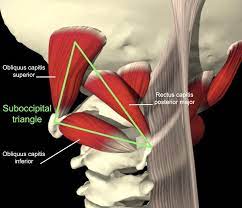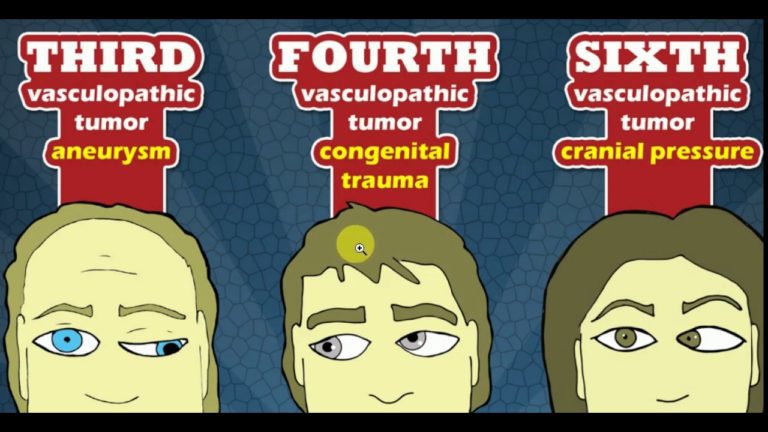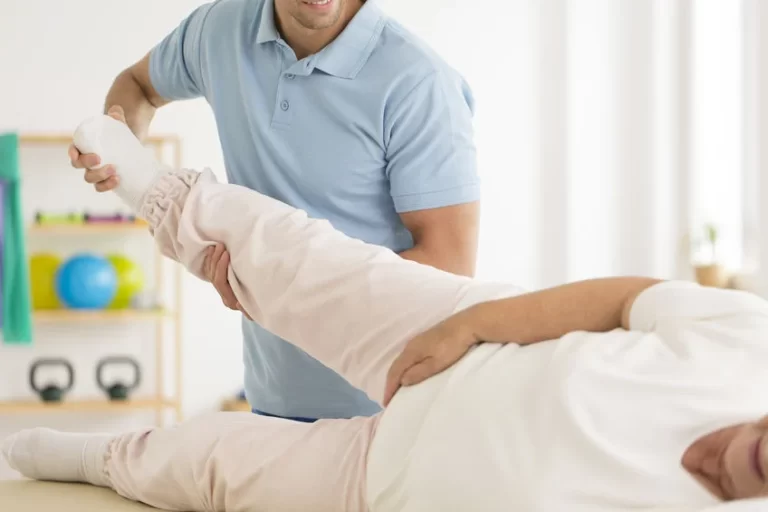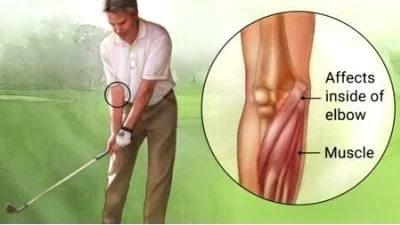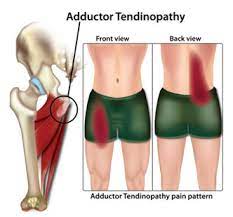Obliquus Capitis Muscle Anatomy
Table of Contents
Obliquus Capitis Superior Muscle
What is Obliquus Capitis Superior Muscle?
- Obliquus capitis superior, or superior oblique, is a tiny coupled/paired muscle situated deeper in the upper cervical region, at the base of the occipital bone. It is 1 of the 4 muscles that comprise the suboccipital muscles group together with the rectus capitis posterior major, rectus capitis posterior minor, or the obliquus capitis inferior.
- Obliquus capitis superior helps in the extension of the head. However, its role as a postural muscle is majorly more significant than its role as a prime mover.
Relations of Obliquus Capitis Superior Muscle
- Obliquus capitis superior muscle is the more lateral of the suboccipital muscles, situated superficially to the recti muscles or superiorly to the inferior obliquus muscle. It is also the tiniest muscle in the suboccipital group. Obliquus capitis superior creates the superolateral border of the suboccipital triangle where both the vertebral artery and the 1st cervical or suboccipital nerve are present. Both longissimus capitis and splenius capitis overshadow this muscle.
Origin
- Obliquus capitis superior begins from the superior surface of the transverse process of the atlas (1st cervical vertebra). This is also where 1 of the levator scapulae muscle slips arises from.
Insertion
- The muscle becomes bigger as it passes upward, traveling a short distance to ending between the superior or the inferior nuchal lines on the external surface of the occipital bone.
- The ending is situated lateral to the semispinalis capitis muscle or the anterolateral to rectus capitis posterior major.
Nerve Supply
- Similar to the different suboccipital muscles, obliquus capitis superior is a nerve supplied by the suboccipital nerve, this is the 1st cervical posterior (dorsal) ramus.
Blood Supply
- The vertebral artery or the deeper descending branches of the occipital artery gives vascular supply for the obliquus capitis superior muscle or the other suboccipital muscles. Obliquus capitis superior muscle is drained by the vertebral vein via the posterior external vertebral venous plexus.
Action
- The muscles work in bilateral contraction – Atlantooccipital joint: Head extension
- The muscles also work in unilateral contraction – Atlantoaxial joint: Head lateral flexion (ipsilateral)
The function of the Obliquus Capitis Superior Muscle
- Working bilaterally, obliquus capitis superior enlarges the head on the neck at the atlanto-occipital joint. It laterally flexes the head to the same side or the ipsilateral side when working unilaterally. The muscle’s more prominent role is as a postural muscle, whereby it works to stabilize the atlanto-occipital during head movements or the activities of the head.
Clinical Significance of the Obliquus Capitis Superior Muscle
- Obliquus capitis superior is a skeletal muscle of the neck or the head that is responsible for extension or the same side or the ipsilateral flexion of the head by working at the atlanto-occipital joint.
- Headaches– The obliquus capitis superior is part of a group of muscles termed the suboccipital muscles. Overuse or incorrect posture generally leads to a strain or other injury of the muscles, which ends in neck pain, headaches, or eyestrain. Exercises or stretches may help to ease the symptoms. The use of NSAIDs, like ibuprofen, will use to treat headaches.
- Migraines– If migraines happen, it might be a sign to visit a doctor for a prescription of medication. These symptoms are unlikely to go away without the betterment of the posture.
Obliquus Capitis Inferior Muscle
What is Obliquus Capitis Inferior Muscle?
- Obliquus capitis inferior muscle is 1 of the 4 suboccipital muscles. Being combined with the rectus capitis posterior major, rectus capitis posterior minor, & the obliquus capitis superior muscles; obliquus capitis inferior is the biggest muscle in the 4.
- The primary functions of obliquus capitis inferior are to enhance the movements of the head or the neck or to maintain posture by supporting or assisting the atlantoaxial joint.
- Obliquus capitis inferior is a skeletal muscle of the neck that is in charge of tilting or turning the head from side to side. This muscle is the portion of the suboccipital muscles of the neck. It is the only suboccipital muscle that does not join the skull.
Relations of the Obliquus Capitis Inferior Muscle
- Obliquus capitis inferior is situated in the posterior region of the neck, located deeper than the semispinalis capitis muscle, splenius capitis muscle, or the trapezius muscle. Combined with rectus capitis posterior major or the obliquus capitis superior muscles, it makes up a region in the neck known as the suboccipital triangle.
- Obliquus capitis inferior muscle creates the inferolateral border of this triangle.
Origin
- The obliquus capitis inferior muscle is the only single muscle of the suboccipital group that does not end in the skull. Instead, it spans the 1st or the 2nd cervical vertebra. Arising from the lateral surface of the spinous process of the axis (2nd cervical vertebra)
Insertion
- obliquus capitis inferior crosses in a superolateral direction to ends into the posterior aspect of the transverse process of the atlas (1st cervical vertebra).
Nerve Supply
- Just like all 4 muscles of the suboccipital group, obliquus capitis inferior is a nerve supplied by the posterior ramus of the spinal nerve C1, the suboccipital nerve.
Blood Supply
- Vascular supply arrives from the vertebral artery or the deeper descending branches of the occipital artery (a branch of the external carotid artery), while it gets evacuated by the vertebral vein.
Action
- The muscles work in Bilateral contraction – Atlantooccipital joint: Head extension
- The muscles also work in Unilateral contraction – Atlantoaxial joint: Head rotation (ipsilateral)
The function of the Obliquus Capitis Inferior Muscle
- Bilateral contraction of obliquus capitis inferior results in the head extension, at the atlantoaxial joint. While unilateral contraction generates a rotation of the head towards the same or the ipsilateral side.
- Note that due to the oblique angle of its muscle fibers, this muscle is the powerful rotator of the neck. Obliquus capitis inferior muscle also plays a major postural role; it works together with the other suboccipital muscles to stabilize the atlantoaxial joint, or thus the position of the head, during other body motions (like standing up from a sitting position).
Clinical Significance of the Obliquus Capitis Inferior Muscle
- Cervical dystonia – Cervical dystonia is the rarest condition that affects the obliquus capitis inferior muscle, resulting in the head jerking involuntarily without warning to either the left side or the right side, or tilting from ear to shoulder, or back or forth. This painful disorder might cause neck strain or cramping or headaches. Causes for the disorder are presently unknown but thoughts are that certain anti-psychotic medications or neck injuries might cause the disorder. In the past, the absorption of different types of drugs has assisted to treat the condition, with the most general being the Botulinum toxin. Other treatments consist of the use of Parkinson’s disease drugs, like Cogentin, muscle relaxants, or pain medications. Alternative treatments consist of neck exercises, neck braces, or stress relief techniques. In rare circumstances, the absorption of selective denervation surgery is available. During the time of the surgery, cutting the nerves or the muscles that might cause dystonia may correct the distorted or disrupted posture.
- Injury to the suboccipital muscles might occur during excessive motion, tilting of the head, or propping the head up with the hands while lying down. Symptoms that might occur with suboccipital muscle overuse consist of headaches from the back of the neck up into the head, migraine headaches, or a stiff neck. These symptoms might be a contributory factor to other ailments like Temporomandibular Joint Disorder, colds, sinusitis, tiredness, eyestrain, or food allergies.
Stretching Exercise for Obliquus capitis Muscles
Obliquus capitis superior stretch
Suboccipital stretch
- Sit or stand up straight, while maintaining good posture.
- Keep the mouth nearer with the teeth together & then place 2 or 3 fingers on the front of the chin.
- While maintaining an extended neck, compress or push on the chin towards the back of the head, until a stretch is felt in the back of the neck.
- Hold the position for 10 secs & then repeat 4 times. Perform this stretch 5 times a day.
Suboccipital stretch #2
- Stand or sit with maintaining a good posture.
- Tilt the chin down into the neck.
- Locate the 2 bumps on the back of the head & then touch them.
- Press upward toward the ceiling & hold the pressure for 20 secs. Perform this stretch 5 times a day.
Neck extension overstretch
- Sitting down, tilt the head backward, or with your hands on the top of the head apply a tiny amount of pressure to stretch the front neck muscles.
- Stop this exercise immediately if you get any dizziness or any feeling of blurred vision.
- Perform this stretch 5 times a day.
Suboccipital Muscle Stretch in Variation
Manual Stretching
Patient position & the procedure: Sitting
- How to do:
- Identify the spinous process of the second cervical vertebra & then stabilize it with the thumb or with the 2nd metacarpophalangeal joint (or with the thumb or the index finger surrounding the transverse processes).
- Tell the patient gently nod, doing just a tipping motion of the head on the upper spine. Guide the motion by putting the opposite hand across the forehead of the patient.
- You can hold for 30 secs & then do three reps.
Patient position and procedure: Supine
- How to do:
- Sitting on a stool at the head of the treatment table while the forearms are resting on the table. 1 hand stabilizes the C2 vertebra by grabbing the transverse processes between the proximal part of the thumb or the index finger; the opposite hand assists the occiput.
- Nod the head of the patient with the hand below the occiput to take up the slack of the suboccipital muscles; then tell the patient to roll the eyes upside.
- This creates a gentle isometric contraction of the muscles of the suboccipital. Afterward maintaining for 6 secs, tell the patient to roll the eyes downward.
- As the suboccipital muscles easy, take up the slack by passively nodding the head through a new range of motion. The only movement should be happening between the occiput or the C2.
- The contraction is slow in order to not cause the overflow into the multi-segmental erector spinal muscles or the upper trapezius muscles.
- You can hold for 30 secs them repeat three reps.
Self-Stretching
- How to do:
- Patient position & the procedure: Supine or sitting. Guide the patient to nod the head, bringing the chin nearer to the larynx until a stretch is felt in the suboccipital region. Putting minor pressure below the occipital area with the palm of the hand while tipping the patient’s head forward will reinforce the motion.
- You can hold it for 30 secs & then repeat three reps of it.
Obliquus Capitis Muscle Stretch
- The obliquus capitis muscle (of the transversospinalis group) is stretched by flexing the head & the neck at the spinal joints.
- Adding in lateral flexion (not seen in the accompanying illustration) will raise the efficacy of the stretch for the other-side obliquus capitis muscle
- You can hold for 30 secs & the three reps.
Stretch to Obliquus
- The right side Obliquus Capitis muscle is stretched by flexing, the left laterally flexing, & the left rotating the neck at the spinal joints, while the right side of the shoulder girdle is allowed to raise.
- You can hold for 30 secs & the three reps.
Table Capitis Muscle Stretch
- Sitting in front of a table.
- Keep the chin in & down throughout this stretch.
- Place the left fist on the left side of the chin.
- Place the left elbow onto the table in front of you.
- Rest the weight of the head onto your fist.
- Tilt the head to the left.
- Apply more pressure to the chin to gear up the stretch.
- The goal is to feel a firm stretch on the right side of the neck.
- Hold for 30 secs.
- Perform on the alternate side.
Stretch to Capitis
- Tuck the chin in & downwards.
- Tilt the head to the right.
- Put the right hand on the opposite side of the head.
- Apply downward compression.
- Slowly turn the head to the left.
- The goal is to feel a firm stretch on the left side of the Obliquus Capitis muscle.
- Hold for 30 secs, 3 rep.
- Repeat on the alternate side.
Obliquus Capitis Stretch Alterations
- Place the fingers on top of the left side collar bone.
- Pulling the skin down.
- Tuck the chin in & down.
- Slowly turn the head towards the left side.
- Tilt the head towards the right side.
- The goal is to feel a stretch on the left side of the Obliquus Capitis muscle.
- Hold for 30 secs, 3 rep.
- Repeat on the alternate side.
Chair Lean Stretch
- Sitting down on a chair.
- By using the right hand, grab onto the side of the chair.
- Keep the shoulder completely relaxed.
- Leaning the body completely towards the left side.
- Then tuck the chin in & downwards.
- Tilt the head towards the left.
- Place the left hand on the right side of the head.
- Apply downward compression.
- The goal is to feel a stretch on the right Obliquus Capitis muscle.
- Hold for 30 secs, 3 rep.
- Repeat on the alternate side.
Neck Elongation Stretch
- Tuck the chin in & downwards.
- Now Slide the head towards the right side.
- Then Elongate the right side of the neck in an upwards direction.
- The aim is to feel a stretch on the right side of the neck.
- Perform on each side.
- Do thirty reps, three reps.
Strengthening Exercise for Obliquus capitis Muscles
Obliquus capitis inferior exercises
Neck extension exercise band
- Attach or join an exercise or theraband band on the floor (below a table leg usually works well, or below a heavyweight), & with the neck flexed forwards, move the neck backward into extension creating resistance in the band. You will feel a smooth contraction of the muscles at the back of the neck. Return to the head to the beginning position & then repeat.
Neck retraction exercises
- Sit on soft ground or a chair & then engage the core to help stabilize the spine.
- Brace the posterior muscles in the neck to bring the head back into a steady position while having the chin slightly downward.
- Maintain the position briefly.
- Relax & then repeat.
- Start with 1 set of 5 reps and work the way up to ten reps in total.
Obliquus Superior Exercises
Chin to chest stretch
- Get into a sitting position on the ground. Put both hands at the base of the head with fingers interlocked.
- Point the thumbs down or the elbows extended ahead.
- Pull the head down to the chest & hold for 20 to 30 secs.
- Perform ten reps of this exercise.
Obliquus Inferior Exercises
Superman Exercise
- Do this exercise on a mat. Lie down flat on the stomach with the arms extended outside in front of the body.
- The legs should be kept flat on the ground, as well as the arms.
- Lift the arms or the legs simultaneously like you are trying to fly. squeeze the lower back. Make sure to respiration occur properly.
- Depending on the individual type of fitness, maintain the position for a minimum of 2 secs up to 5 secs per rep. Aim for 5 to 10 reps at a time in sets of 2 to 3.
- Individual fitness levels will determine how many reps or sets the individual is capable of doing at a single time or in a single day.
Theraban Rows
- First Place the theraband around a doorknob & tie a knot in the theraband & close it in the door.
- The band is at chest level.
- You are standing tall with each end of Theraband in your hands & knee joint slightly bent, abdominal muscles tight.
- Must be Maintained the tight trunk muscles & pull arms back while squeezing the shoulder blades together.
- You are trying to focus on squeezing the shoulder blades without shrugging the shoulder joint up towards the ears.
- Then return to starting position but Do not lean back.
- Hold this exercise position for 10 seconds.
- Perform the 10 times in 1 session & 3 sessions per day.
Head lifts
- You are Lie flat on the back with the arms stretched to the sides.
- Nod the head & tuck in the chin.
- Hold this exercise for a few seconds before releasing back to a neutral position.
- Hold this exercise position for 10 seconds.
- Perform the 10 times in 1 session & 3 sessions per day.
Seated Clasped Neck Stretch
- You are sitting comfortably on the floor & in a chair.
- Must place your body in proper alignment.
- Then Clasp the hands & bring both palms to the back of the head.
- Try to slowly press the hands down toward the thighs & tucking the chin into the chest.
- Maintain this stretching position for 30 secs.
- Perform the three times in one session and three sessions per day.
Tucked in Exercise
- The patient’s position should be Sitting straight & look straight ahead with the ears level parallel over the shoulders joints.
- Place 3 to 4 fingers on the chin.
- Maintain the finger, pull the chin & head extended beside up to a slowly stretch is felt at the bottom of the base of the head & top of the neck.
- Maintain or hold for 5 to 10 secs. Repeat seven to ten times.
Neck flexion Exercise (Neck tilt)
- In Relax sitting position flex the head down to rest the chin on the chest (Flex the neck fully).
- Gently tense the neck muscles & hold for 4 to 8 secs.
- Return to the initial position & repeat seven to ten times.
Neck extension exercise
- In Relax sitting position without arching the back, slowly move the head backward so you are looking upward.
- Hold for 5 to 10 secs. Return to starting position.
- This is a good exercise to do during working hours to prevent neck strain.
- Gently tense the neck muscles & hold for 5 to 10 secs.
- Return to a neutral position & repeat 10 times.
Neck flexion Exercise (side to side)
- Flex the head down towards the shoulder, & try to touch the shoulder with the ear (Without elevating the shoulder).
- Normally tense the neck muscles & maintaining the position for 8 secs.
- Back the head to a normal position & repeat in the opposite direction.
- Repeat 10 times on each side.
Neck Rotation exercise
- Begin this exercise by doing a rotation of the head at the 1 side, maintaining the chin at the same level & moving within normal limits.
- Very slowly stretch the neck muscles & hold for eight to ten secs.
- Return back the head to the neutral position & repeat in a different direction.
- Perform 10 times on each side.
Revolved Triangle Exercise
- Begin this exercise by standing with the feet about four feet apart.
- Face the right toes forward & the left toes out at a slight angle.
- Square the hips & face forward in the same direction the right toes are pointing.
- Lift the arms up at the sides so they are parallel to the floor.
- Slowly hinge at the hips to fold forward, stopping when the torso is parallel to the floor.
- Bring the left hand to the leg, the floor, or a block, wherever you can reach.
- Extend the right arm straight up with the palm facing away from the body.
- Turn the gaze to look up toward the right thumb.
- Exhale to turn the neck to look down at the floor.
- Inhale as you return the gaze upward.
- Keep the rest of the body stable & continue these neck rotations as you stay in the pose for up to one min.
- Perform on the alternate side.
Upward Plank Exercise
- This pose helps you to passively hang the head back or down, releasing tension in the neck or the shoulders. This lengthens or also stretches the obliquus, chest, & shoulder muscles.
- Make sure the back of the neck is completely relaxed to avoid compressing the spine. If it is not desirable for you to let the head hang back, you can tuck the chin into the chest and then lengthen the back of the neck. Importantly on engaging the neck muscles without straining.
- You can also allow the head to rest back on various or some type of assistance such as a chair, a wall, or stacked blocks.
- How to do- Come into a seated position with the legs straight in straight of you.
- Press the palms to the floor with the hips.
- Raise the hips & bring the feet beneath the knees.
- Deepen the pose by extending the legs.
- Open the chest and let the head drop back.
- Hold for up to 25 to 30 secs.
- Do this pose up to three times a day.
Prone Cobra Exercise
- This exercise is occur by lying face downwards on the ground & assist gravity as resistance in the reinforcing process.
- Lying face downwards on the floor, place the forehead on a rolled-up hand towel for support.
- Put the arms by the side, & palms downwards on the ground.
- Slide the tongue onto the upper palate of the mouth.
- Pinch the shoulder blades together & elevate the hands off the ground.
- Roll the elbows inwards, palms outwards, & thumbs upwards.
- slowly raise the forehead about an inch off the towel keeping the eyes looking ahead forward at the ground
- Hold the position for seven to ten secs.
- Do ten reps.
Isometric Neck Exercise
- Isometric neck exercises assist to strengthen the neck muscles. This exercise is mostly prescribed by Physiotherapists from day one to relieve Neck pain.
Isometric Neck Exercise
How to perform this exercise In a sitting alignment, - keep the Body steady and straight, Place both hands beside the neck (as seems in the images), & try the neck to push compress on the hands & At the same time Resist the neck muscles, both hands steady and align pattern for 4 to 5 secs & then relax.
- The first day does 8 reps & the 2nd day does 10 reps. Do some exercise on the forehead & each side of the neck.
- Do the exercise by compressing the side of the head. Repeat 8 times, then opposite sides.
Prone Rows Exercise
- Lie down on the stomach with the arms dangling off the side of the bed (just angling the body so the head is turning the corner of the bed).
- Use a pillow below the stomach for comfort. Start by pulling your arms back while bending elbows & contracting the shoulders blades together then gently back to the initial position.
- Do not raise your head up while pulling the arms back.
- Repeat twenty times. Perform two times a day.
Standing pushups exercise
- Stand about an arms-length down from the wall with the bases spread piecemeal.
- Place the hands on the wall, making sure that they parallel with the shoulders.
- Keeping the reverse straight, sluggishly bend or flex the elbows, bringing the upper body toward the wall.
- Extend the elbows & back to the initial position.
- Repeat twenty times. Perform two times a day.
Lateral extension exercise
- Begins by looking forward ahead. Gently lean the head to the left side. Use the left hand for resistance, use the muscles in the neck to press against it. Hold for 5 to 10 secs, then return to the initial position.
- Then, slowly lean the head to the alternate side. Hold for 5 to 10 secs.
- Return to the initial position. Do 10 repetitions. This is a good exercise to do while in working hours, especially if you have to keep the head in a steady position for prolonged periods, as in working at a computer.
Tilted forward flexion exercise
- Sluggishly lean the head to the leftism. Using the left hand for resistance, use the muscles in the neck to press against it. Hold for 5 to 10 secs, also return to starting position.
- Also, sluggishly lean the head to the other side. Hold for 5 to 10 secs.
- Return to starting position. Do 10 repetitions. This is a good exercise to do during work, especially if you have to keep the head in a steady position for a prolonged time as in working at a computer. Do this exercise every partial hour to help with the prevention of neck tightening.

